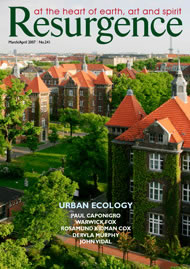YOU WOULD THINK it was a simple story to write, but it wasn’t. The quirky truth was buried beneath so much history that it took five years to write my book Walking to Greenham. Young mother, consumed by fear of nuclear war, is seized by the notion of something new and involving women having their say, or rather, in the circumstances, their shout, about the arms race. The nuclear arms race is threatening the human race with oblivion; it appears to be out of control. She is inspired by the idea of a march to Greenham Common, future site for nifty modern ground-launched cruise missiles. Three other women offer to help; they organise the march; thirty-six women, some kids and a few men start off from Cardiff. Half-way there they realise they are getting nowhere with their aims…
Incidentally, what were those aims?
We wanted to stop the arms race.
What, us?
This was impossible, no? Warsaw Pact and the Western world were locked in mutual mistrust. Frozen in Cold War thinking, their attitudes were mirror images of each other. Their mutual paranoia fed each other, as Christian and Islamic fundamentalisms do today.
We succeeded, apparently, beyond our wildest dreams. Thousands of women camped on a patch of common outside Newbury, demonstrated, invaded the base, and seriously got up the noses of the Americans, who had plans for a nuclear war “limited” to a place called “The European Theatre”. But still the arms race marched on, inexorably. In fact, we were now part of the Cold War, ironically used by the Soviet State as propaganda for their own purposes: “See the vicious repression meted out to these peace women by America and her allies – this is why we need to be well-armed against such evil forces!” This was the message
accompanying daily newsreel footage of the peace camp, all over the USSR.
So one fine day in May 1983 we went to Russia, just three of us, to meet with a small group of people who were acting, like us, on their own initiative. They called themselves the Group for Trust and their idea – that the way out of the Cold War stalemate lay through dialogue and trust-building at both citizen and state level – was simple and brilliant.
They were dismissed by their state as an insignificant group of worthless, unrepresentative troublemakers. In fact, they were feared, not for their military might, but for the infectious power of their idea. We were regarded in identical fashion by our state. When together we, the ‘nobodies’ (for that is who we were), confronted the cold warriors of the USSR, the state representatives, the result was interesting.
Greenham women faced evictions, fines, brief spells in prison; the Group for Trust faced – and some endured – years in Siberian prison camps, for their adherence to our common belief in a saner world. Theirs is the real untold story of the Cold War and its ending, initiated in 1985 by Mikhail Gorbachev, who was a trust-builder.
No mainstream publisher would consider my book. It all reminded me of the dismissive, patronising responses I remember from twenty-five years earlier, when I was pleading for support for a march by a group of women: “We do applaud your initiative, but unfortunately…” As is often the way, what I needed was under my nose. The right publisher for my book, a small press dedicated to new writing by women living in Wales, was near me in Aberystwyth.
Those who encouraged our fragile idea in those difficult, early days were, like us, people who had fled the cities in search of a life more attuned to the natural world and its rhythms. We were gardeners; we grew food, read the papers, cared about the planet, got our hands dirty. People thought we were trying to re-create the past. We were not – we were part of a possible sustainable future.
Out of this marginal culture, out of this remote periphery of Britain, came a small group of penniless, powerless women, who started an extraordinary, uniquely powerful movement. We were not ourselves extraordinary or very brave or remarkable. We were just like you. “Who are you?” asked a ‘sympathiser’ when I phoned him, one day in 1981, to ask if he could organise us a lunch. “We are just ordinary women,” I replied. “That’s impossible,” he said. “This is too big an idea for that.”
If you, or anybody you know, was touched by this idea, this is your story: the one you were part of making. Read all about it.
Walking to Greenham: How the Peace Camp Began and How the Cold War Ended is published by Honno at £8.99.







